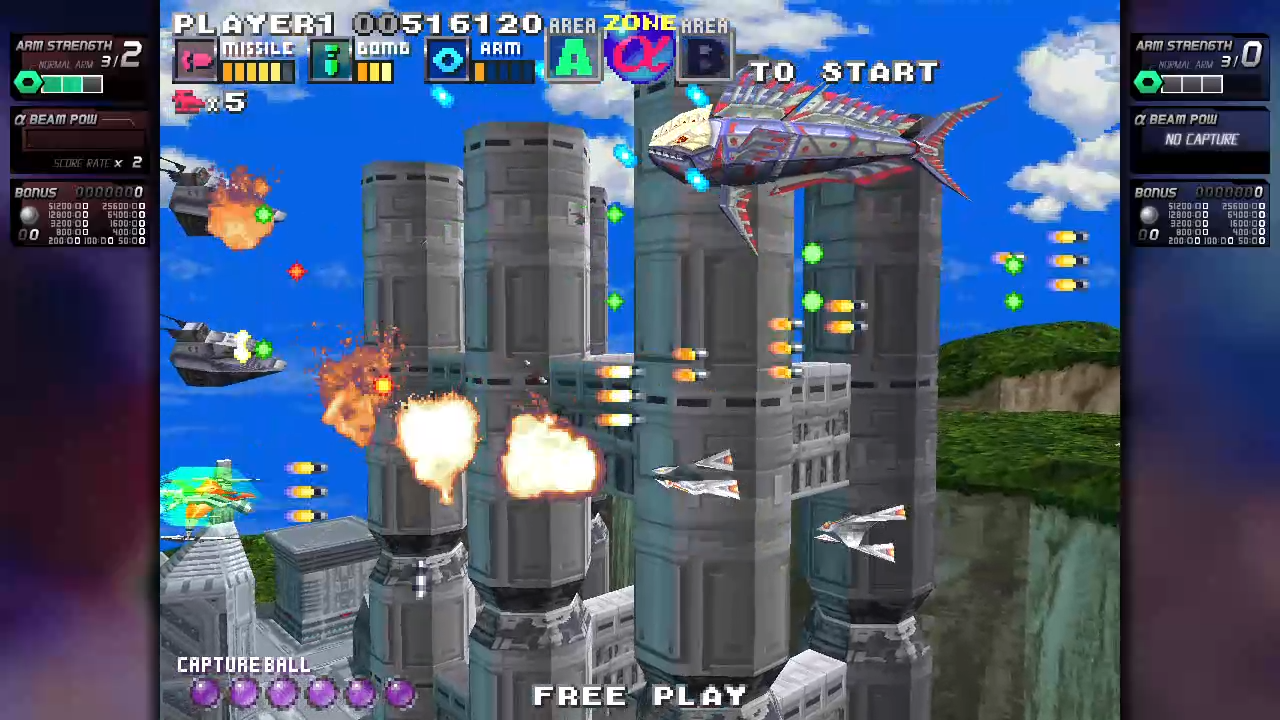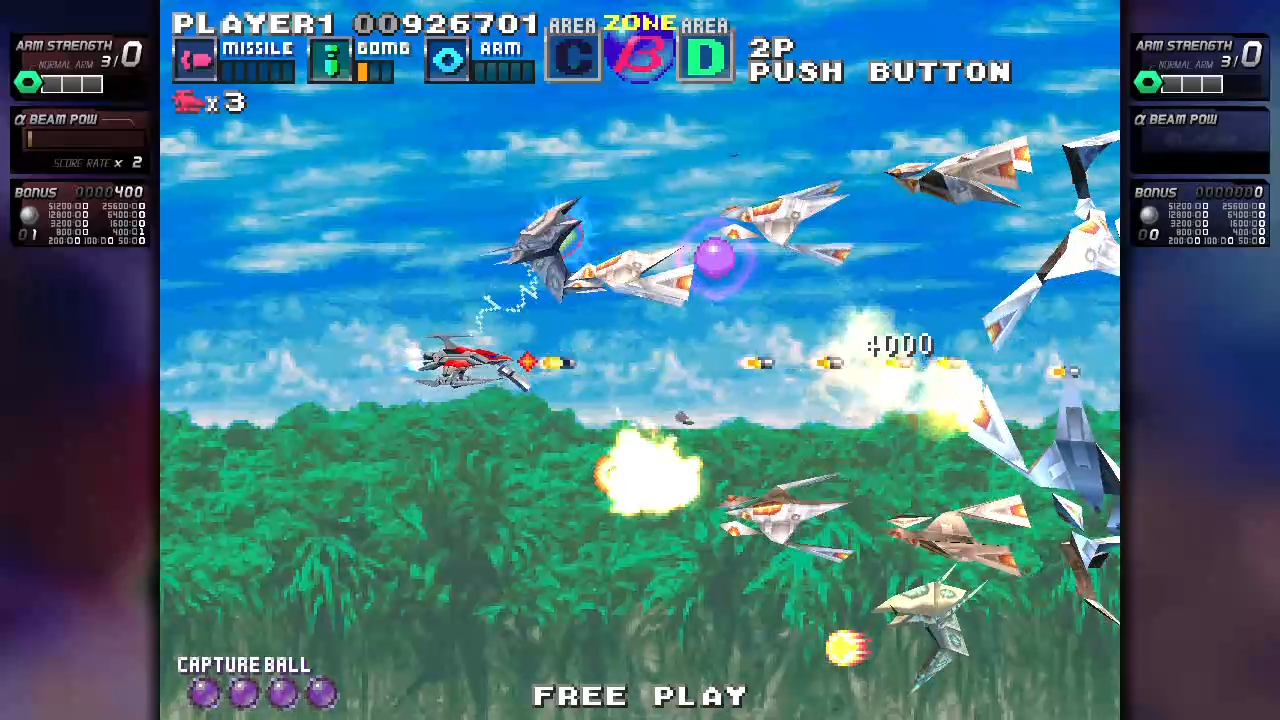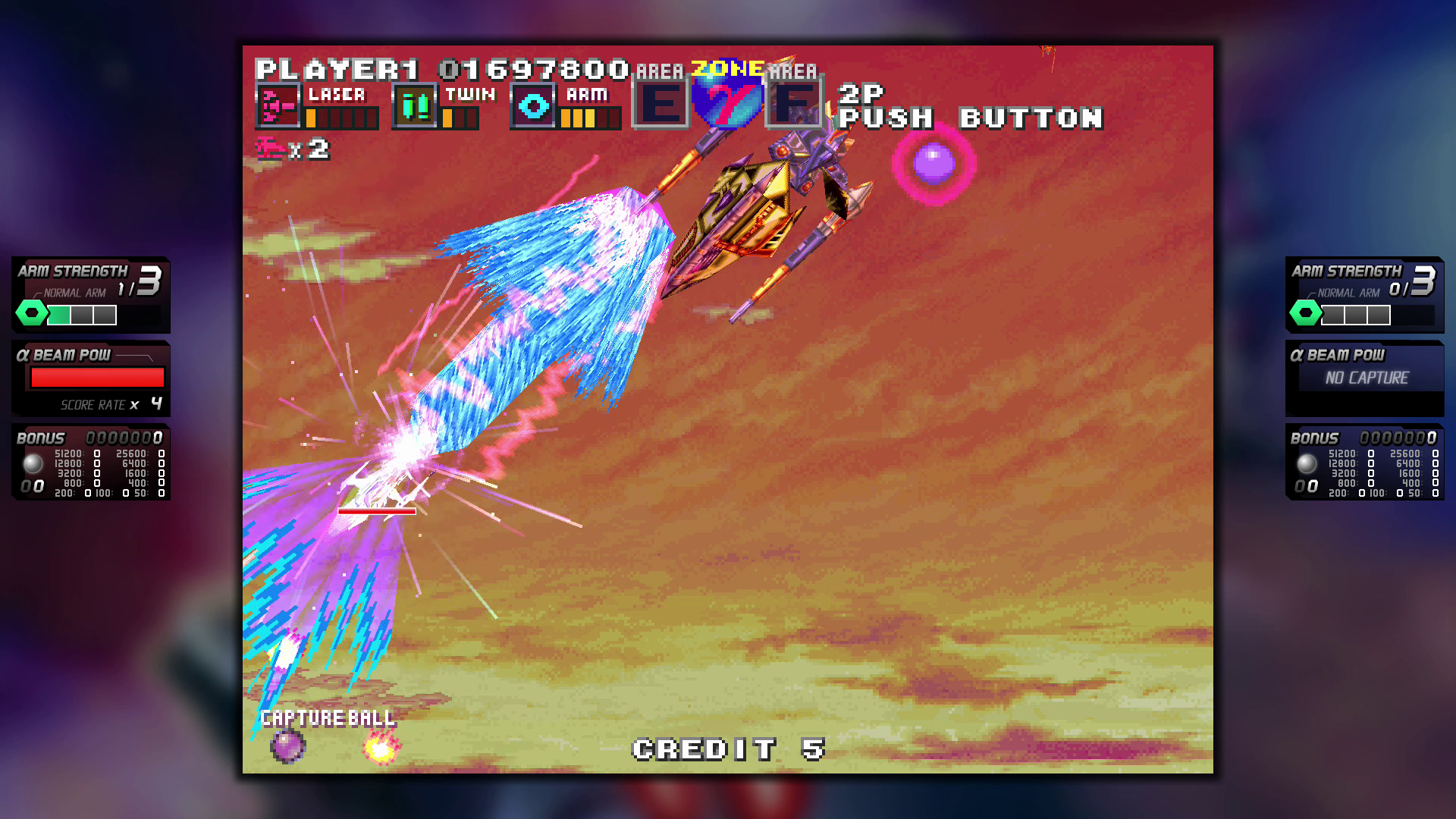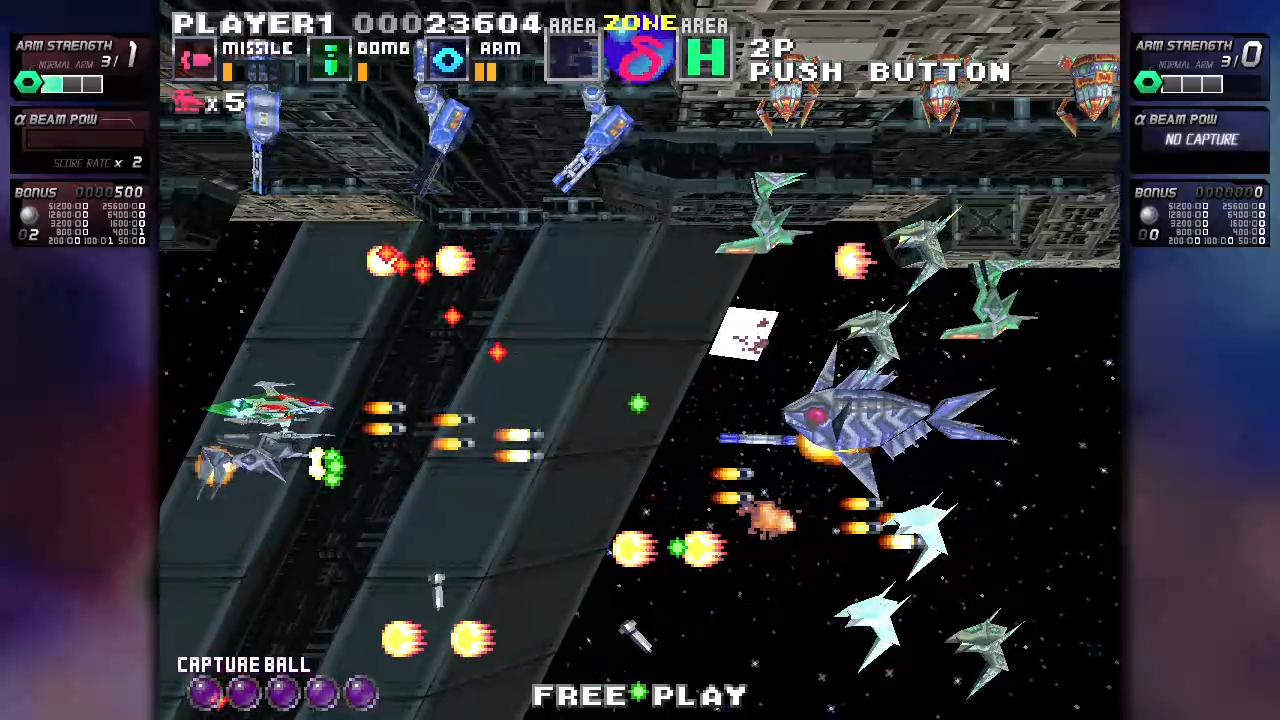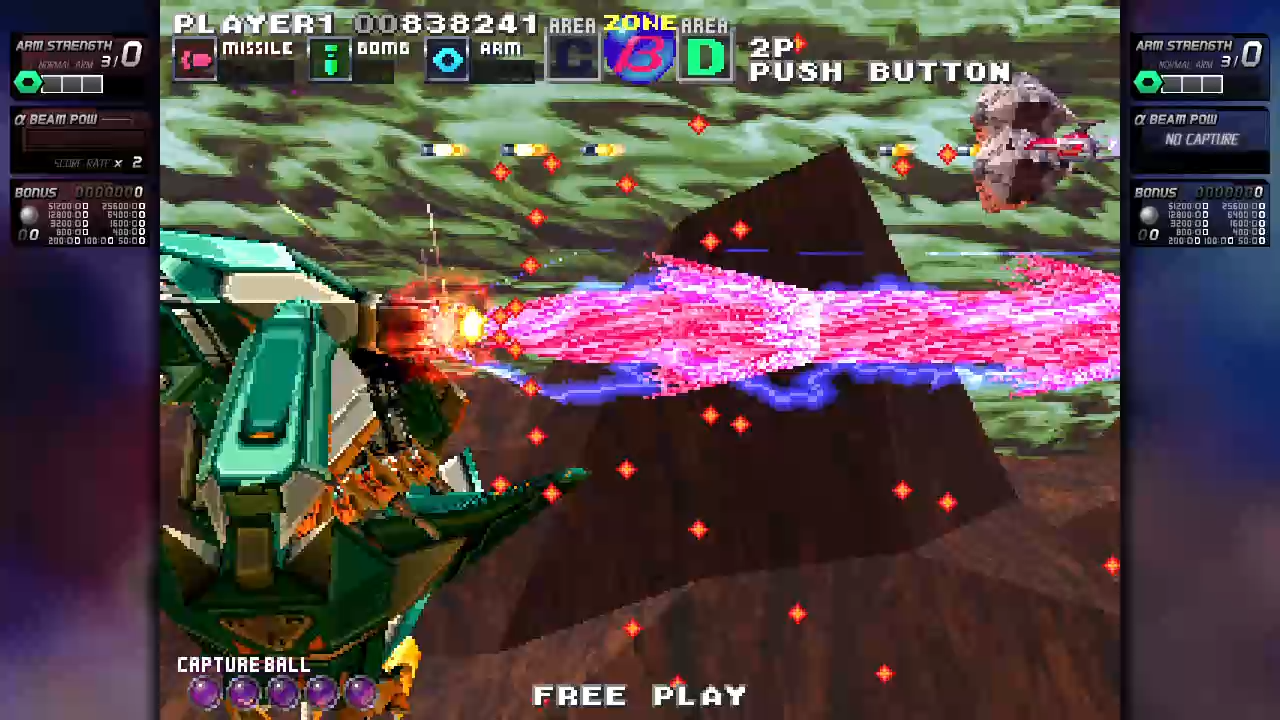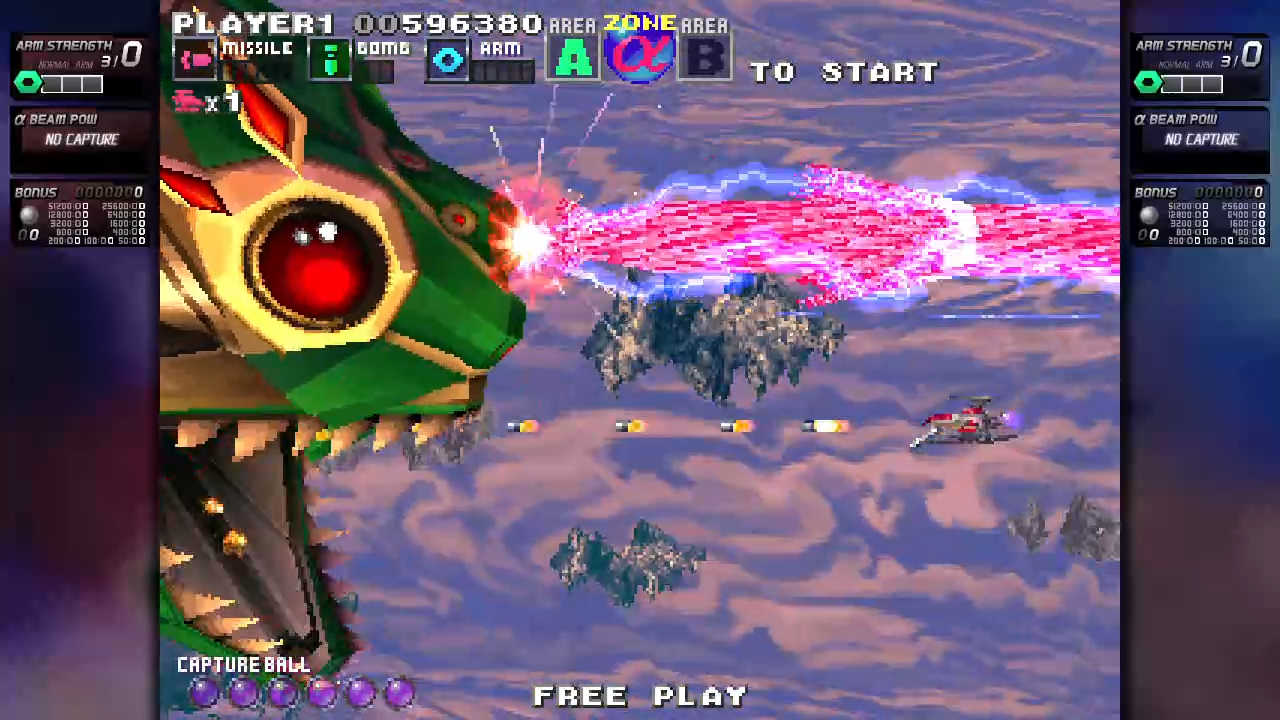Game: “G-Darius HD”
G-Darius HD

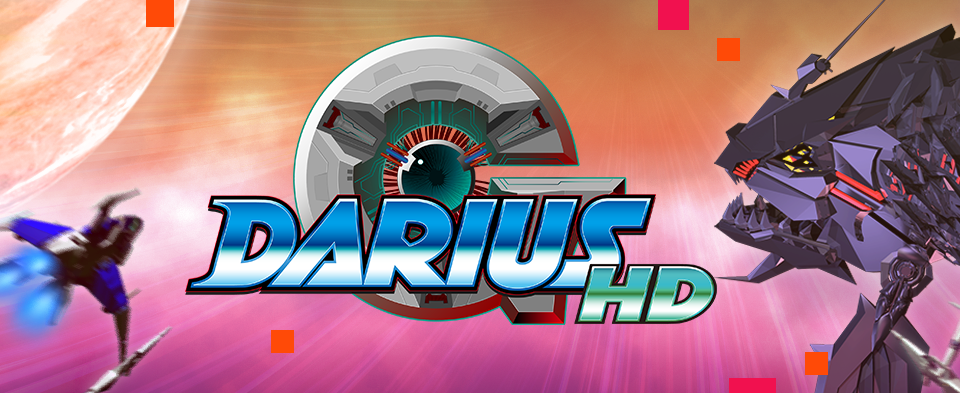
I was always a child of the arcade era. I was one of those kids who would be enthralled by the flashing lights inside those chunky cabinets, plastered with over-the-top artwork and blasting high octane music and sound-effects at the player from less than a metre away. While I was more into fighting games growing up, I spent my fair share of pocket money on shoot ‘em up games too, with on-rails classics like R-Type and Truxton being two of my favourites.
Originally released in 1997, sci-fi arcade favourite G-Darius has been given a HD facelift and re-released by ININ Games, even stretching to a physical option coming soon for the collectors amongst you. So, eager to relive my youth, I filled my pockets with change and strapped myself in for a play through!
At A Glance
| Scores | |
| Visuals | 5 /10 |
| Sound | 3 /10 |
| Gameplay | 5 /10 |
| Overall | 5 /10 |
| Positives | + Hit of Shmup arcade nostalgia + Customisable settings to flex difficulty up/down + Cool robo-creature bosses |
| Negatives | – Enemy shots get lost against the busy backgrounds – Infinite Continues limits any meaningful challenge – Does little to stand out in a crowded genre |
| Price (When Reviewed) | £24.99 |
| Our Playtime | 2 hours |
| Available On | Nintendo Switch, PS4 |
G-Darius HD will feel immediately familiar to arcade shooter fans, whether they’ve played this specific title before or not. Designed to pull in passing punters on the arcade floor, the opening scene flashes by in a blaze of colour and noise, and the flickering notification asking you to ‘Insert Coin(s)’ offers an immediate pang of nostalgia. After smashing the button to add credits, you’re offered the option of 1- or 2-player mode before being dropped straight into the action. Gameplay is a 2.5D side-scrolling affair, where players control a nifty ship known as the ‘Silver Hawk’ and blast through all manner of enemy fighters, asteroids and gun emplacements whilst attempting to dodge swathes of incoming enemy gunfire. Enemies swoop in and out from all over the screen, sending countless shots your way whilst also threatening to crash into you at any given moment – it’s a barrage of ‘old school’ for the eyes.
First impressions are solid; the semi-clumsy HUD, oversized on screen prompts and brightly coloured enemies bobbing around the screen pulled me right back to my youth. The controls are tight and accurate, which is an absolute MUST in a genre where you need precision steering to avoid enemy fire from all angles, and button presses all seemed nice and responsive too. Blasting coloured enemy ships will produce a small orb that, when collected, upgrade an element of the Silver Hawk – offering better firepower, shields or up- and downward shooting missiles. There’s nothing particularly original about any of the upgrades but it’s undoubtedly fun to glide around the screen laying waste to anything and everything that appears under a ridiculous amount of gunfire from your little ship.
Much more original however are the capture ball and ‘beam duelling’ mechanics, which I haven’t seen utilised in shoot ‘em up before. The Silver Hawk has a store of capture balls that the player can fire at an enemy ship in order to permanently turn them into an ally, adding one of a myriad of different shooting patterns to their arsenal. Almost every enemy in the game can be captured and finding out which ships work best for your play style is good fun; it’s very satisfying turning the baddies’ gunfire on themselves, especially when it’s an attack pattern that you’ve been struggling to avoid yourself.
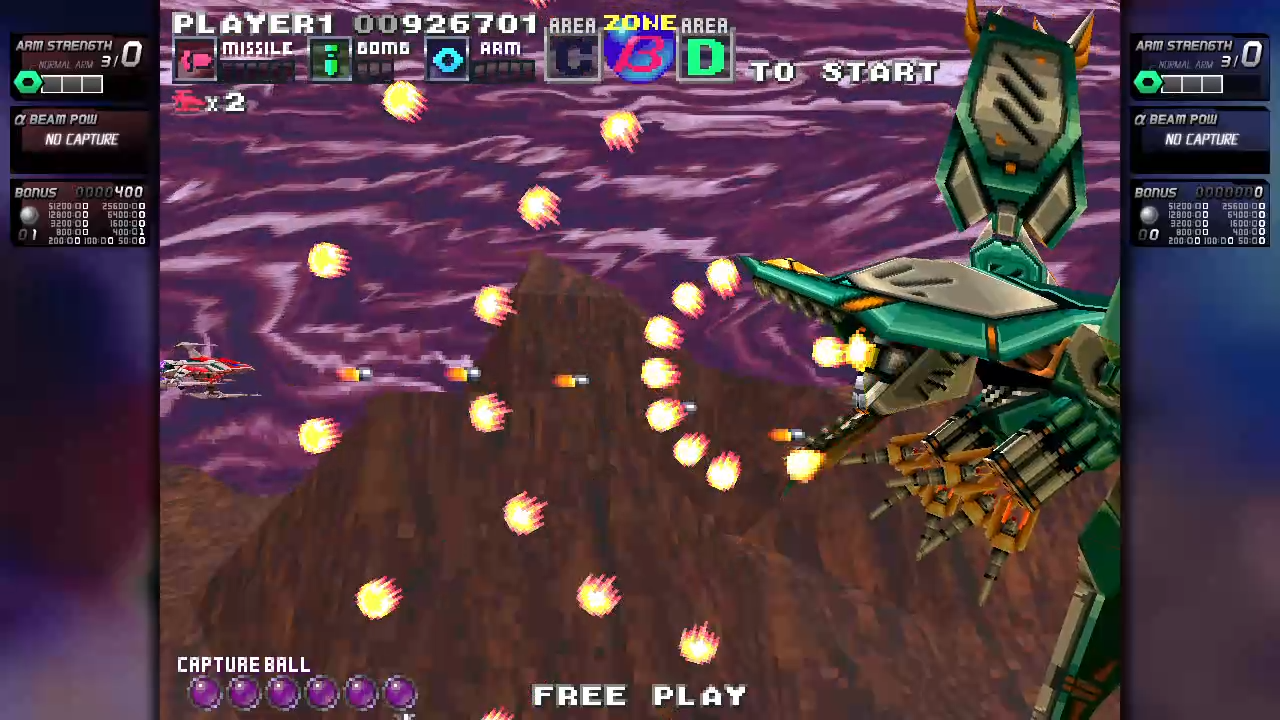
Whilst you have an enemy captured you can charge up a beam weapon by holding the ‘A’ button, effectively trading long term support for a powerful short term blast. The beams cut through standard enemies with ease but are best used for tackling the epic bosses at the end of each level, who also have beam weapons of their own. The best way to combat a boss is to engage in what’s called a ‘beam duel’, where you fire your weapon directly into the bosses beam and then have to button bash your way to dominance to overpower your enemy, causing a tonne of damage. Beam dueling feels wholly unique to G-Darius HD and offers some strategy to boss fights that all too often become dodge-fests for the player.
Speaking of bosses, they are a very cool aspect of the game. Designed like enormous robotic sea creatures, the end of level enemies are incredibly characterful and stand out against other non-descript super-spaceships from other games. They often sweep in and out of the background and offer a range of different attack patterns that will keep players on their toes for sure. And graphically speaking, it’s the bosses (along with the Silver Hawk) who look the most improved from the HD overhaul, with the spit and polish really standing out on such big models.
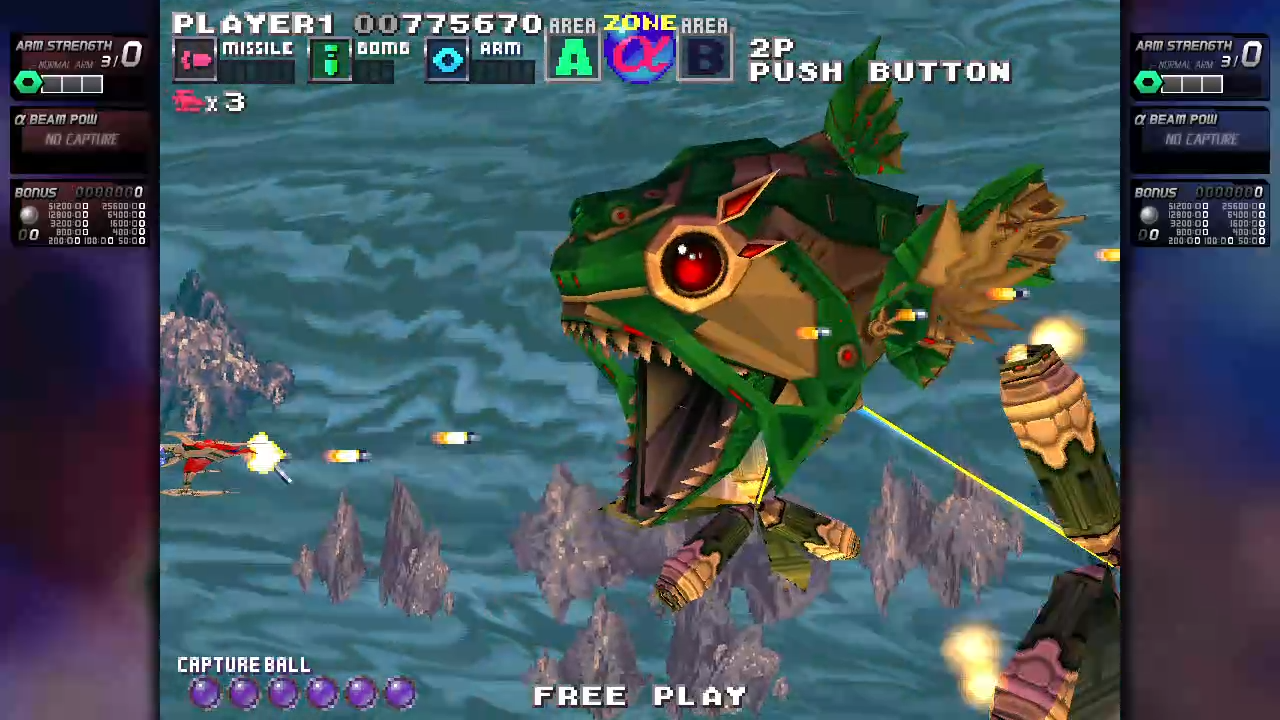
The sound in G-Darius HD is, sadly, entirely forgettable. Most of the soundtrack seems to be made up of synthesised steel drums and odd, warbling and/or abrasive keyboard melodies that do nothing at all to add excitement to the gameplay. That said, a lot of the music is drowned out by the sounds of gunfire, lasers or exploding enemies and I can’t entirely decide if that is a blessing or a curse. Either way, there is very little to write home about in the audio department.
Something that will hardly come as a surprise to anyone who’s played arcade shooters before, but G-Darius HD is really frickin’ hard. In a genre that’s defined by making levels so difficult that you spend all of your money trying to reach the end, G-Darius HD is absolutely on-brand – you will die playing this game, and it will happen a lot – so get used to the idea. There are times when enemy spawn and attack patterns feel impossible to avoid and there are bullets in literally every inch of the screen. Adding to the difficulty are the rather colourful backgrounds that can make it really difficult to make out enemy gunfire when combat is at its busiest. There are a good number of options that you can tweak to slide the difficulty up (?!) or down which is nice for players who want to get the most out of the game, but the default difficulty level can be incredibly frustrating. That said, you do have to embrace it as par for the course, since you’re playing a bully of a game that was first designed to steal your lunch money before being ported to console.
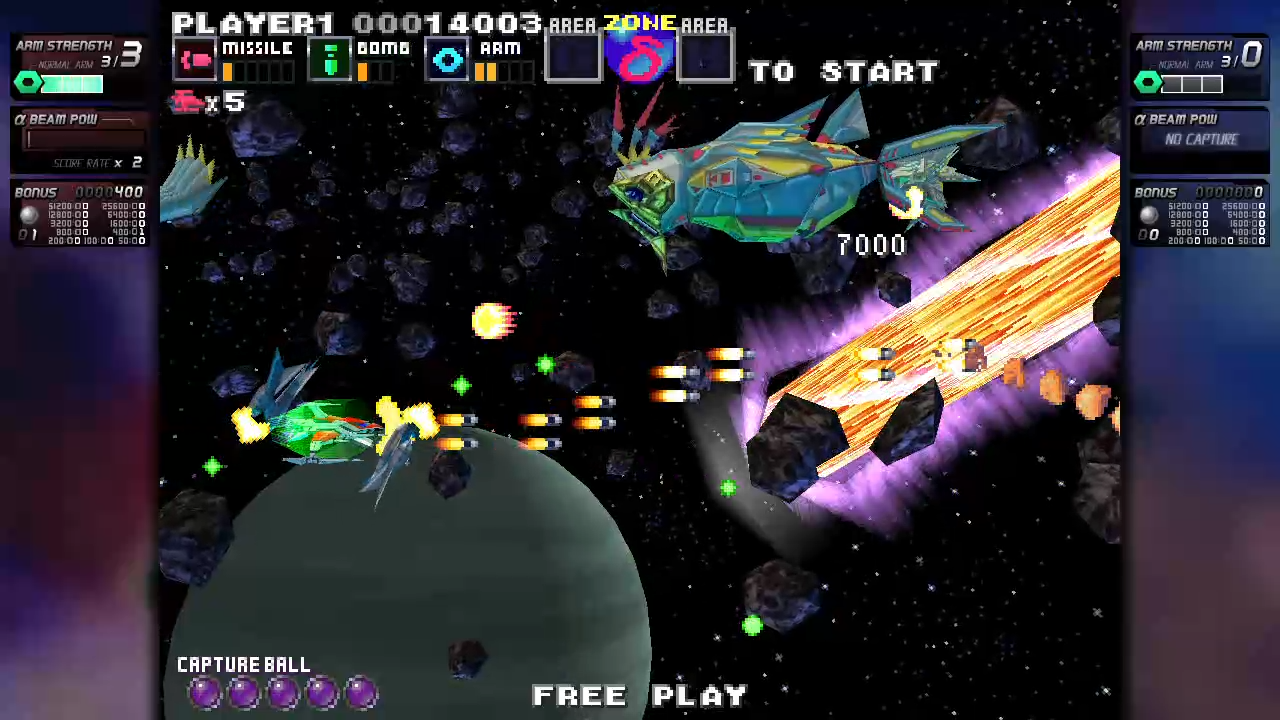
And in truth, I think the feel of this port might be my biggest problem with G-Darius HD. The gameplay is mostly enjoyable between the many rage-inducing deaths, but I feel like allowing the player infinite continues at the push of a button renders the brutal difficulty moot and squashes any real sense of challenge. Sure, there are some shiny new achievements to unlock, but since money is no longer an object the only thing keeping you from reaching the end of the game is your pride. I feel like an arcade port always needs to have something added so that continues have to be earned rather than granted freely, which would give the player some determination to get better at the game, rather than just die a million times and repeatedly press ‘continue’ until they reach the final boss.
While the final boss may be a million deaths away, it certainly isn’t a million levels away. G-Darius HD offers an interesting branching level mechanic that allows you to pick your own way through the game, and you’ll need to play through it multiple times in order to experience all the levels Taito has put together. Sadly, there are only 15 levels in total and the run time for the entire game is excruciatingly short, even with these branching options. This means that the perceived value for money might be hard to justify here, unless of course you’re a player who loved the original and expect to replay this again and again, or are a physical games collector looking for another title to add to your horde.
Overall, I can’t call G-Darius HD anything other than a run-of-the-mill arcade shoot ‘em up. While the capture ball and beam duelling are fun wrinkles to the gameplay, they aren’t enough to make the game stand out against a myriad of other titles in the same genre. The achievements and graphics updates are nice but I struggle to look past its short run time and genesis as an arcade cabinet that’s designed to eat your money. Sadly, this just isn’t an ideal console title. Fans of the genre will be overjoyed to have G-Darius HD available in their games library, but I don’t think it will capture many hearts outside of those players who forever yearn for the glory of the arcade High Scores table.
In the interest of full disclosure, the publisher provided VGamingNews with a copy of the game in order to conduct this review.


